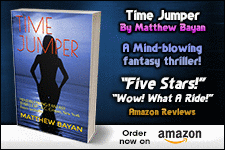Avoid Ho-Hum Dialogue - Flip the Script
- by Matthew Bayan
- Sep 1, 2018
- 2 min read
AVOID HO-HUM DIALOGUE - FLIP THE SCRIPT
While doing research, I came across a story I think can be very helpful in writing dialogue. You’ve probably heard of Method Acting. Stripped down, it’s a technique where the actor submerges into a character, essentially becoming the character in order to explore facets of motivation and personality that will result in an authentic performance.
The unabbreviated name of the technique is the Stanislavski System of Acting, better known as the Stanislavski Method.
Why bring this up? Because one of the stage techniques Stanislavski used to train actors offers a helpful tool for writing dialogue.
In a rehearsal theater, Stanislavski would seat his students in the first rows. In one exercise meant to strengthen improvisational skills, he picked a man and a woman to go onstage and stand at opposite ends of the stage. He whispered to the man that his character was interested in the woman and had heard from friends that she wanted to go out with him. Stanislavski then informed the woman that her character can’t stand the man and that if he were the last man on earth, she would not go out with him.
Imagine the man approaching the woman with a swagger, feeling confident. “Hi, Mary, how’d you like to go to the movies with me Friday?”
She frowns. “I’m not interested in going anywhere with you.”
Under normal circumstances, the man might give up. But he’s been told that she wants to go out with him, so he concludes she’s playing hard to get. He pushes on.
With each additional advance, the woman might become more and more annoyed. She’s been instructed that the man is a dog; he cheats on girlfriends. She will never agree to a date.
This exercise can evolve into pathos, comedy, or drama, depending on which course the characters choose. Also depending on how much the audience is informed of what’s going on.
The essential point here is that each character is operating from a completely different script. Whatever happens will be the result of the friction that exists between these two scripts. In real life, people frequently operate from different scripts. They have different opinions, biases, weaknesses, fears, etc. Nobody tells someone else up front what his or her script is.
To avoid ho-hum dialogue and to increase tension and conflict, give characters different scripts. This doesn’t mean that characters get into fist fights. It means that they have both obvious and subtle differences in motivation. As the reader begins to understand different characters, the scripts may become more evident and offer better insights into the characters. But only the reader is aware of the different scripts.
For the characters, each others' scripts are usually a mystery. The stronger the difference in characters’ scripts, the more tension, suspense, and conflict you will discover in their dialogue.
And don't miss BLAST RADIUS, released today. Just click on the cover to go to Amazon.












Comments